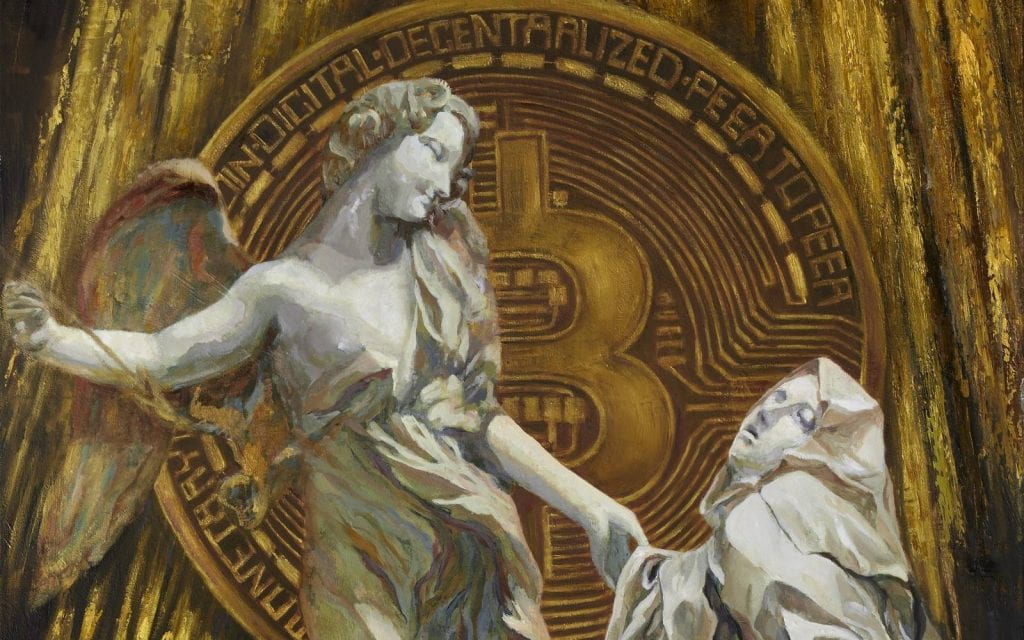Although cryptocurrency has been around for at least a decade, public discourse on digital currencies has been evolving as society finds new ways to implement and interact with it.
NFTs, or non-fungible tokens, are increasingly becoming a popular investment vehicle (read: dalliance) in the crypto realm as artists and content creators are finding a new, profitable medium for their creative expressions. Steve Aoki sold an NFT to former T-Mobile CEO John Legere for $888,888.88. Christie’s, the high-end auction house, sold an NFT for $69.3 million in March, and has started accepting cryptocurrency as payment.
NFTs are uniquely identifiable digital works of art; anything digitally created can potentially be sold as an NFT (including a Tweet). They are frequently associated with cryptocurrency because they must be created and maintained through blockchain database systems. Much like the cryptocurrencies Bitcoin and Litecoin support their eponymous currencies, Ethereum supports Ether. Ethereum supports most NFTs which, like cryptocurrency, have long chains of code that uniquely identify and tether them to a single point of origin. A difference between an NFT and a cryptocurrency is that a non-fungible token cannot be substituted by another—it is truly unique, like a social security number or the original Mona Lisa. On the other hand, one Bitcoin can be traded for another—they are interchangeable. Hence the term “non-fungible” token.
Financial experts around the world are constantly adapting to the changing landscape of cryptocurrency. Expert or not, the question is, “Will cryptocurrency be economically sustainable?” The question that needs to follow this and, quite frankly, any innovation subsequently must be, “is it environmentally sustainable?”
One calculation suggests that the average NFT has a carbon footprint equal to more than a month’s electricity usage for a person living in the EU. The technology behind cryptocurrencies and thus, NFTs is hugely power hungry. Most cryptocurrencies are based on a system called “proof of work” (PoW). This PoW system requires that a certain amount of time and effort be exerted before being able to add another block to the chain. The reason this energy intensive system is required is because most cryptocurrencies are decentralized. There’s no server farm to manage the data; information is saved on a global network of individual computers, called “nodes,” and each node needs to undergo processes to be in compliance with the PoW system.

Source: https://github.com/kylemcdonald/cryptoart-footprint
In a study published in Energy Research & Social Science, investigators determine that “in 2018, each $1 of Bitcoin value created was responsible for $.49 in health and climate damages in the US and $.37 in China… Further, with each cryptocurrency, the rising electricity requirements to produce a single coin can lead to an almost inevitable cliff of negative net social benefits, absent perpetual price increases.”
We have only begun to understand the enormity of energy consumption by NFTs over the past year or so. Digital artist, Memo Akten, brought light to the carbon impact of NFTs by creating a website that he later took down after noticing that his data was being abused and misrepresented. One crypto artist, Joanie Lemercier, after hearing of Akten’s calculations, discovered that in ten seconds, one of his NFT releases had consumed the energy equivalent of what his entire studio consumed in a year and a half.
“Research into new technologies (including blockchain) is essential. But this has to follow a conscious, less extractivist model. I welcome the fundamental research happening in this space, but there is no doubt that the recent rapid growth of the NFT market exemplifies Silicon Valley’s move-fast-break-things accelerationism.”
Memo Akten
Mounting pressure from digital artists has led some crypto art platforms to drop plans to sell NFTs, while other platforms, like Pixeos, commit to using sustainable technologies to sell their art. Ethereum has been working on a system, Eth2, set to launch sometime this year that would make its technology more energy efficient by several orders of magnitude.
Further reading:
Blockchain – Investopedia
Proof of Work – Investopedia
Ethereum Plans to Cut Its Absurd Energy Consumption by 99 Percent – Institute of Electrical and Electronics Engineers
The climate controversy swirling around NFTs – The Verge
NFT Explainer – The Verge
